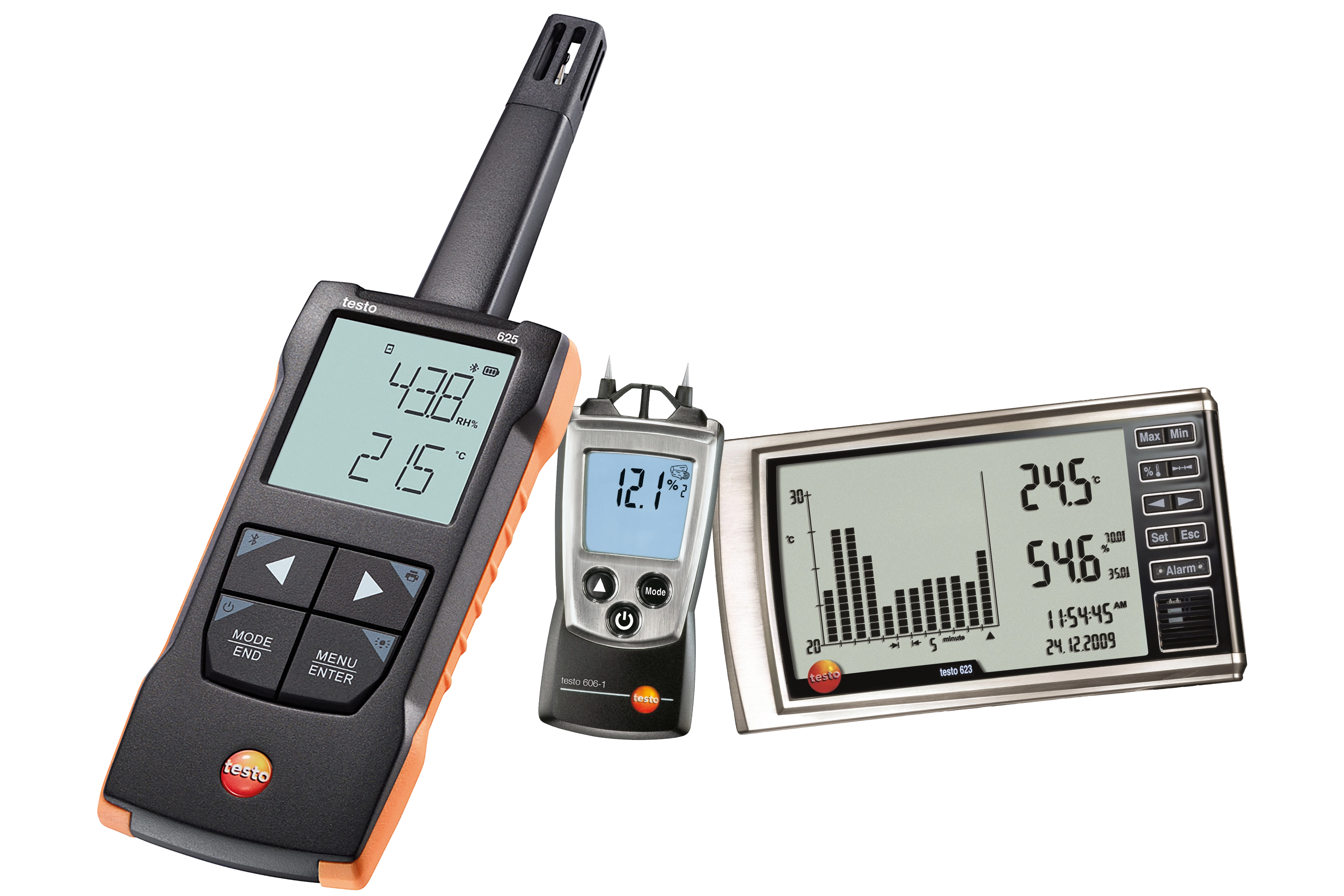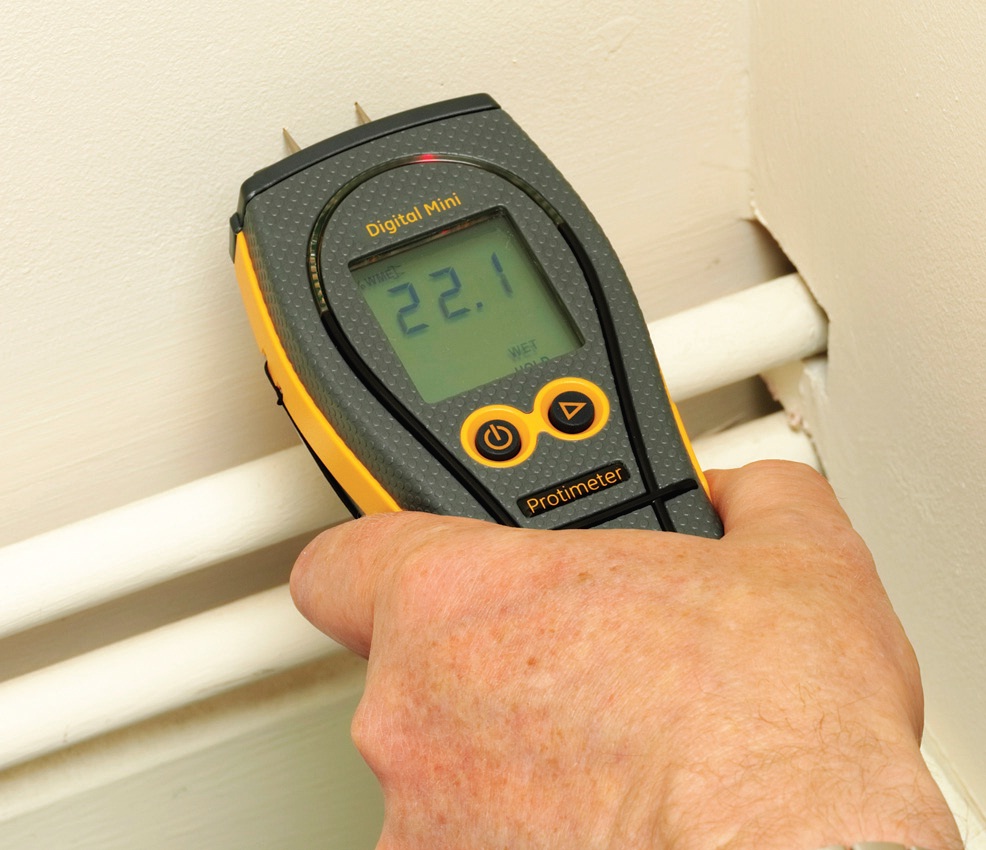Look Into the Globe of Moisture Meters: Every Little Thing You Required to Know
In the realm of moisture meters exists a world of accuracy and practicality that usually goes unnoticed. These gadgets, while seemingly simple, hold a wealth of information that can dramatically influence various markets and applications. Understanding how moisture meters operate, the different kinds available, and their varied usages can drop light on their relevance in ensuring high quality and performance. By checking out the complexities of moisture meters, one can reveal an important tool that transcends simple measurement, providing insights that can make a significant distinction in countless fields.
Just How Moisture Meters Work
Moisture meters operate by determining the electrical conductivity or capacitance of materials to figure out the dampness web content existing. These meters are indispensable devices across numerous industries, including woodworking, building, and agriculture. By making use of different techniques such as pin-type or pinless technology, wetness meters give exact analyses that help professionals make educated choices.
Pin-type wetness meters work by placing the sharp pins right into the material being evaluated. On the other hand, pinless moisture meters make use of electro-magnetic signals to scan a bigger area without creating any type of damage to the product's surface area.
Despite the approach made use of, moisture meters play an essential function in protecting against issues such as mold development, structural damage, or item flaws brought on by excess moisture. Comprehending exactly how these meters job is crucial for making certain the high quality and integrity of products in various applications.
Kinds Of Moisture Meters
Given the essential role moisture meters play in numerous sectors, it is necessary to recognize the various types available to professionals for accurately examining wetness degrees - Moisture Meter. There are mostly two primary kinds of moisture meters: pin-type and pinless moisture meters

On the other hand, pinless wetness meters utilize electro-magnetic sensing unit plates to check a bigger location of the product without causing any damage. This kind is suitable for swiftly scanning large locations and is frequently utilized for flooring, walls, and ceilings. Pinless meters are practical for taking readings on completed surfaces without leaving any kind of visible marks.
Both sorts of moisture meters have their advantages and are chosen based on the certain demands of the job at hand. Comprehending the distinctions between these kinds is essential for experts to make precise dampness evaluations.
Applications Throughout Industries
With varied functionalities, moisture meters find extensive application throughout different sectors, assisting specialists in making certain optimal problems for products and frameworks. In the farming industry, wetness meters are invaluable for identifying the dampness web content in grains, seeds, and hay, ensuring top quality control and protecting against mold growth. Construction professionals depend on dampness meters to examine the moisture degrees in building materials like concrete, wood, and drywall, which is vital for maintaining architectural integrity and stopping issues like rot or mold. The flooring industry uses dampness meters to measure the dampness content in subfloors before setting up numerous flooring, protecting against pricey damages due to excess moisture. In the food sector, dampness meters are made use of to keep track of and control moisture levels in items such as grains, nuts, and dried out fruits to preserve freshness and high quality. In addition, dampness meters play an important duty in the remediation and damage control industry by aiding professionals recognize and address water damage in buildings without delay. Across these varied markets, dampness meters are essential tools for making certain the top quality, security, and long life of various products and products.
Tips for Making Use Of Wetness Meters
Use the dampness meter's calibration setups to make sure exact readings when gauging the moisture web content in numerous products. Additionally, make certain the meter is set to the proper wetness variety for the product you are gauging to obtain the most accurate outcomes.
When utilizing a pin-type dampness meter, put the pins to the suitable deepness suggested for the product being checked. This guarantees that the moisture analyses are taken from the proper depth within the material, giving an extra accurate representation of its wetness content. For pinless dampness meters, keep in mind to keep appropriate contact with the product's surface area to get reliable readings.
On a regular basis check and replace the batteries in your moisture meter to avoid inaccurate analyses as a result of reduced power. Store the meter in a risk-free and completely dry location when not being used to prolong its lifespan and keep its accuracy. By complying with these suggestions, you can optimize the efficiency of your moisture meter and acquire exact moisture web content dimensions throughout various products.
Upkeep and Calibration
To ensure the precision of dampness content dimensions, routine maintenance and calibration of the moisture meter are vital steps in its correct functioning. Calibration changes the wetness meter to guarantee that it offers constant and reputable results.
Calibration ought to be executed periodically, specifically see post if the wetness meter is made use of frequently or in critical applications where exact measurements are needed. By keeping and adjusting the moisture meter more tips here consistently, users can rely on the accuracy of the wetness material dimensions gotten.
Conclusion

Finally, moisture meters play a vital function in different sectors by precisely gauging the wetness material of materials. Recognizing exactly how these tools function, the various types readily available, and appropriate upkeep and calibration are important for getting dependable outcomes. Whether in farming, building and construction, or production, making use of wetness meters helps make sure quality assurance and performance in processes.

In conclusion, moisture meters play a crucial duty in various industries by properly gauging the wetness content of i thought about this materials.